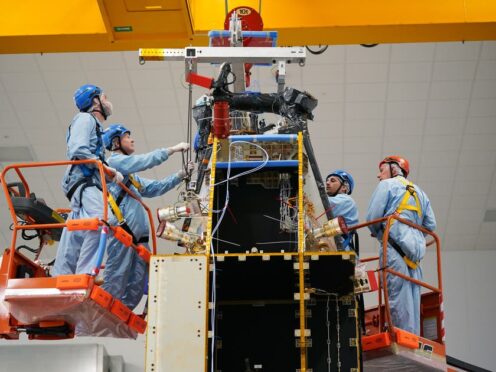
The UK’s manufacturing sector returned to growth in March for the first time in 20 months as companies took in new orders and output increased.
Figures from the S&P Global/CIPS UK manufacturing PMI survey hit 50.3 in March, rising from 47.5 in February.
The score was slightly better than the 49.9 that economists had forecast according to a consensus supplied by Pantheon Macroeconomics.
Any score above 50 is considered to show that the sector is growing, and this is the first time since July 2022 that the PMI rose above that level.
“The end of the first quarter saw UK manufacturing recover from its recent doldrums,” said Rob Dobson, director at S&P Global Market Intelligence.
“Production and new orders returned to growth, albeit only hesitantly, following year-long downturns, with the main thrust of the expansion coming from stronger domestic demand.”
The survey found that there was still a “weak” trend in new export orders.
Demand from overseas might have fallen at the slowest rate since last April, but it is still the 26th month it has contracted.
Production increased for the first time since February 2023, the survey said, helped by the consumer goods sector which offset downturns elsewhere.
Customers were starting to restock their shelves, the survey said.
“The upturn in demand also led to improved confidence among manufacturers, with positive sentiment hitting an 11-month high,” Mr Dobson said.
“Some 58% of companies expect their output to rise over the coming year.
“We’re also seeing signs of stabilisations in employment and purchasing activity alongside a move towards lowering safety stocks, all signs that manufacturers are tentatively optimistic about the road ahead.
“Potential blockers remain such as continued weak export performance and supply chain stresses, with the neighbouring EU market the main drag on overseas demand and the Red Sea crisis still impacting supply chains.
“Signs from the survey that the impact of both of these factors is easing is therefore welcome news.”

Enjoy the convenience of having The Sunday Post delivered as a digital ePaper straight to your smartphone, tablet or computer.
Subscribe for only £5.49 a month and enjoy all the benefits of the printed paper as a digital replica.
Subscribe